Sharlyn J. Lauby's Blog, page 65
July 27, 2021
Compliance: HR Departments Need to Spend Time Where They Create the Most Value

Estimated reading time: 5 minutes
(Editor’s Note: Today’s article is brought to you by our friends at HRdirect , a trusted source for employee-related compliance, administration, and motivation tools. They serve as a one-stop shop to make employee management easier. Enjoy the read!)
I’d like to believe that organizations and HR professionals know that they’re required by law to display labor law posters. The subject of those posters varies by location, industry, and organization size. But did you know that organizations are also required by law to distribute handouts to employees?
All 50 U.S. states have some form of employee handout requirement. Handouts include federal, state, county, city, and industry-specific notices. As of the date of this article, the state with the fewest required handouts is Tennessee with 26. Puerto Rico (a U.S. territory) has 25. And the state with the most required handouts is California with 100 (including language variations). That is not a typo.
Some organizations might be thinking that these are not really “required” handouts, rather just “requested” handouts. I asked Ashley Kaplan, Esquire, senior employment law attorney for ComplyRight about fines and penalties surrounding mandatory employee handouts. Ashley leads the expert legal team responsible for researching and monitoring employee notice requirements in every U.S. jurisdiction to ensure employers comply with ever-changing regulatory requirements. “These notices are mandatory, and noncompliance may result in serious penalties, fines, and even liability in employment litigation. In some cases, daily penalties may be imposed for distributing the notices past their deadlines, which can really add up.”
Just Because HR Can Doesn’t Mean They ShouldNow that we’ve established that organizations need to distribute employee handouts, the issue becomes the best way to do it. I’ve always been a believer in using my time the right ways, meaning the ways that I can bring the most value. And right now, I have to think that one of the ways for HR departments to bring the most value is by focusing on hiring and retaining the best talent.
A little side story: one of my favorite email newsletters is called “Further” by Brian Clark. The newsletter is focused on health, wealth, and personal growth strategies. It comes out weekly if you want to subscribe and check it out. In a recent edition, he was talking about The Great Defection. Over the past year, employees have reprioritized. What was important in 2019, might not have the same priority today. And as organizations start to talk about returning to the office, employees might be are looking for new opportunities.
The reason I’m bringing this up is because hiring and retaining employees is a top concern for employers. HR departments should be are spending their time trying to figure this out versus how many mandatory employee handouts they are required to provide to employees. That doesn’t mean mandatory employee handouts aren’t important.
Which takes us back to our original question – what’s the best way to maintain mandatory employee handout compliance without sacrificing HR’s time and value to the organization?
Our friends at HRdirect are launching a new Mandatory Employee Handout Service that will provide organizations with easy, online access to the latest notifications. The service has two tiers of coverage: Basic and Premium.
Basic service is ideal for organizations with 50 or less employees that don’t experience frequent leave requests, injuries, payroll status changes, or terminations. It includes all the general notices required for existing employees and new hires under federal and state law.Premium service is designed for organizations with 50+ employees who regularly hire, manage leaves, injury reports, payroll status changes, terminations, and other “triggering” events that require certain handouts. This service level is ideal for employers located in cities and counties with more notification requirements as well as employers who want the peace of mind that they’ll be covered for any new or updated requirements at every government level.If you want to see all the service benefits by level in a side-by-side format, check out the chart on the HRdirect website. HRdirect is offering a nice introductory offer – $30 off an annual subscription using the code HRB30.

If you’ve never used a subscription type service for compliance before, one of the questions that you might have is about what takes place when laws change. It’s a valid question. I asked Ashley to share the process. “Our legal team monitors all federal, state, and local requirements on a continuous basis, and we immediately notify our clients via email when legislation affects their employee notification obligations. We also update the content of the notices and instructions on the site in ‘real time’, so they are always current and available, well before compliance deadlines.”
Show Employees That Compliance MattersIf employees are out there looking for new opportunities as “The Great Defection” article suggests, one of the things they will be looking for is safety and security. Employees want to know that their employer places a value on being compliant. It helps with recruiting, engagement, and retention.
Organizations can’t push off their compliance requirements. A very viable option is to find a trusted partner that can keep the organization informed and current. This allows HR to focus on those activities where they bring the most value, like working with a manager to find and keep the best talent.
If you would like to learn more about mandatory employee handouts, download HRdirect’s free e-guide on “Mandatory Labor Law Handouts: What Employers Need to Know”. It’s the type of resource that organizations can use to develop their HR compliance strategy.
The post Compliance: HR Departments Need to Spend Time Where They Create the Most Value appeared first on hr bartender.






July 25, 2021
Job Seekers Want to Work at Organizations that Align With Their Social Views

Estimated reading time: 3 minutes
Over the past few weeks, we’ve been talking about the many reasons that employees are leaving their jobs. And those reasons vary – pay, benefits, flexible work, pandemic safety, etc. It only makes sense that employees will look for their next employer to do better in these areas.
People have not spent the past year or longer of their lives sheltering, masking, worrying, caregiving, etc. to go work for a company that doesn’t align with their values.
But one area that I’m just starting to hear more about is job seekers wanting to work for organizations that have better alignment with their social views. In a study from Markstein and Certus Insights, 77% of consumers want to know what the brands they support are doing to address social and environmental issues. If consumers are paying attention to the brands they support, then it only seems logical that job seekers are too. A recent survey from Gartner seems to support this idea. They cited that 75% of employees expect their employer to take a stance on current societal or cultural issues, even if they have nothing to do with them directly.
While social views might not have been the number one reason that an employee has left or is considering leaving the organization, it could be one of the things that attracts someone to a new employer.
I believe this gets to the heart of corporate social responsibility (CSR) and sustainability, which is a part of the Society for Human Resource Management (SHRM) Body of Knowledge. CSR reflects the organization’s role in achieving economic prosperity, social equity, and environmental protection. A strong CSR strategy will benefit the business and the organization’s brand – both at a consumer level and a job seeker level.
HR professionals will want to help the organization develop their CSR strategies, communicate transparently about business decisions, and act as a role model in the community. HR professionals need to have opinions about social and environmental issues. I’m not saying you have to write about them on your Facebook page but having a point-of-view and being able to articulate it when necessary is essential.
I also want to be careful here and draw the distinction between CSR and politics. I’m not so naïve to think that politics and CSR never intersect, particularly in employee social views. But I do believe there are times when it is possible to take a stand and not make it political. Organizations are going to have to spend some dedicated time thinking about their positions and more importantly, how they plan to articulate their position. It could also be advantageous to communicate the company’s position on social and environmental issues proactively versus reactively.
Whether you call it the great resignation or the turnover tsunami, candidates are going to want to know the social views of the organizations they’re applying to. People have not spent the past year or longer of their lives sheltering, masking, worrying, caregiving, etc. to go work for a company that doesn’t align with their values.
In fact, as I’m typing this, it does make me wonder if job seekers and employees have flipped the company values conversation. Maybe recruitment isn’t about companies finding candidates who support corporate values. Maybe recruitment is about candidates finding companies that align with their personal values. Some people might think this is exactly the same – but I don’t know that it is. I think it totally changes what employment branding looks like.
Image captured by Sharlyn Lauby while exploring the streets of Atlanta, GA
The post Job Seekers Want to Work at Organizations that Align With Their Social Views appeared first on hr bartender.






July 22, 2021
Digital Transformation is Rewriting Work
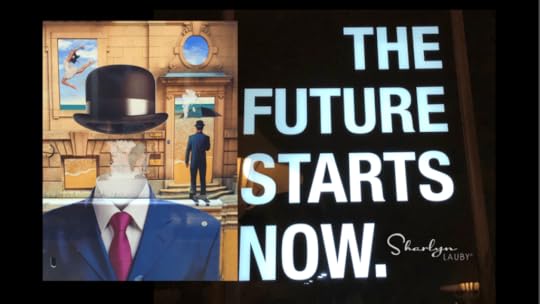
Estimated reading time: 4 minutes
I’m sure that the title of today’s article isn’t really a surprise to anyone. Technology has been disrupting business and the economy for quite some time.
However, one of the things I’ve been hearing consistently since the pandemic became front page news is how unprepared organizations have been for digital transformation. Even the organizations that thought they were ahead of the game. I’m not just talking about organizations having the right hardware and software.
In addition to having the right equipment, digital transformation is about thinking differently. During the virtual HR Technology Conference, Leapgen CEO Jason Averbook, shared a statistic that I thought really put digital transformation into perspective. He mentioned a global survey that said the pandemic sped up digital transformation strategies by an average of six years. I think this is significant.
Averbook explained that one of the reasons for this acceleration was that the pandemic has created a situation where roadblocks are being removed. It makes sense. Before the pandemic, new ideas might have been slowed based on a variety of factors: culture, internal politics, budgets, lack of skills, etc. Now things have changed for organizations and individuals.
But with these changes related to digital tranformation, organizations and individuals need to achieve some alignment in what work looks like, why they do the work, and how the work gets done. Averbook talked about four components to digital success and I could see organizations using these components to create alignment.
Mindset and vision. Averbook explained that the days of static strategy are over, meaning that organizations need to constantly examine their strategy and sunset those things that simply don’t work anymore. I like to think of this as becoming a learning organization. Companies need to unlearn what’s not working and relearn. Employees will have to do the same thing. It’s possible that career goals will have to be more fluid. Individuals will want to stop doing things that no longer make sense for their careers. They will also need to learn and start doing things that will get them ahead.
People and audience. While technology is having a greater presence in our lives, that doesn’t mean we should sacrifice humanity. Being able to deliver digital transformation and a human experience is more important than ever. Organizations will need to design experiences that are inclusive for both employees and customers. Employees should not feel they are receiving a lesser experience. It will be equally important to communicate with both groups in a variety of ways. Organizations can no longer rely on one method of communication for their messaging. This will mean that employees need to be skilled in omnichannel communications – both as givers and receivers.
Process and journey. I was really pleased to hear Averbook talk about the need to redefine what “high-touch” means in today’s world. High-touch used to be another term for “in-person”. Now organizations need to define what high-touch means in terms of human interaction and digital interaction. We also need to establish what the success metrics will be for each. We’ve been seeing this on some level as consumers – what we feel is a positive digital experience or in-person experience. Let me add that I believe these two experiences need to be aligned. It’s not acceptable to have a fantastic digital experience but a terrible in-person one (or vice versa).
Technology and solution. The last component that Averbook discussed was focused on the value of technology. In the first three components (i.e. mindset/vision, people/audience, and process/journey), the focus is on using technology. I felt like this component was targeted on the “why”. For example, digital transformation takes the organization from reactive to proactive. It helps organizations move from effective to efficient. It’s the value of technology that will help organizations maintain their competitiveness and effectively deliver to the bottom-line.
Organizations and individuals need to spend some time thinking about digital transformation and how it will impact their work. As companies start to focus on recovery, technology will be part of the equation. It will be necessary to ask questions like, “Do we have the equipment we need?” “Does everyone know how to use it?” Those sound so basic and they are, but how many organizations aren’t asking those questions right now?
But there are a few other questions that organizations need to consider including “What’s our digital transformation strategy?” “Do we have the skills to execute it?” “What are our competitors doing digitally – both in terms of talent management and customer experience?” The past year has shown us what we knew all along. Technology is redefining work, and we just can’t fight it any longer.
Images captured by Sharlyn Lauby while exploring the streets of Fort Lauderdale, FL
The post Digital Transformation is Rewriting Work appeared first on hr bartender.






July 20, 2021
Strategic Business Growth: Now Is the Time to Think Like a Startup
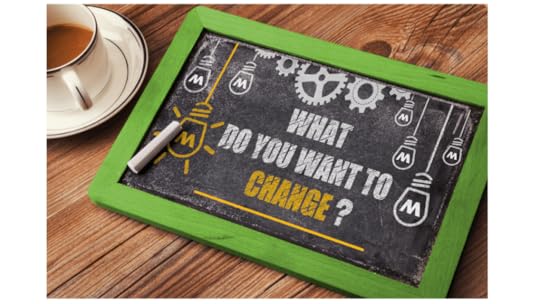
Estimated reading time: 5 minutes
(Editor’s Note: Today’s article is brought to you by our friends at ChartHop, an organization focused on helping leaders in scaling transparent, productive, and intentional organizations. They recently raised $35 million in funding based on their strong business growth. You can read all about it on TechCrunch. Enjoy today’s article!)
I’ve said on more than one occasion that organizations are very focused on economic recovery right now. And I still believe that’s true. So, I was particularly interested to hear how companies were reporting on their financial progress during Q2 earnings calls.
Organizations that want to focus on business growth right now need to think about how they are going to build (or possibly change to) a supporting organizational structure.
One of the companies that caught my attention was Pepsi. Their quarterly revenue rose more than 20% from a year earlier. What struck me was a quote from their CFO Hugh Johnston. “A lot of the things we did through the pandemic, continuing to invest in the business, are paying dividends now that mobility has increased, and consumers are getting out more.”
I’m not here today to debate about Pepsi as a product. But I do believe that Johnston’s comment about strategic business growth is important. It reminded me of something that I read in ChartHop’s “Guide to Intentional Growth” about laying the groundwork for business success. Organizations have an opportunity where their business growth is concerned. I say “have” because I believe it’s not too late. But it does take planning.
Build a Supporting Organizational StructureOne of the reasons that I titled today’s article “think like a startup” is because organizations have a terrific opportunity right now to make some of the changes they’ve always wanted to make. It kinda reminds me of a startup.
A startup organization doesn’t have much structure at first. As time goes on, they add staff, and even then, they still might not have much of an org chart. But after a while, a natural order starts to fall into place – both in terms of organizational structure as well as individual roles and responsibilities. Certain employees will accept ownership of tasks, like the office manager who starts keeping track of everyone’s vacation time.
Groups or teams of employees will start collaborating because they see the value in each other’s talents – for example, marketing and HR will work together on company branding initiatives. And employees will ask other individuals with more experience for guidance or approvals. This might happen when someone needs a new computer – the employee, accounting, and IT will work together to make sure the right equipment is purchased (and paid for!)
Now, don’t get me wrong, this doesn’t all miraculously appear one day in a startup. And sometimes employees need a little nudge in the right direction (if you know what I mean). My point is this – one of the reasons we hear about startups being successful is because they are flexible and agile. They don’t let years of history keep them from creating change. In fact, they embrace change as a way to move forward. They create their strategic business growth strategies and then build the organization to support them.
Unfortunately, there are organizations that sometimes make the mistake of building the organization and then their business growth strategy. You’ve probably seen it too. It can be difficult for these organizations to get out of their own way and, like I said … think like a startup to create necessary change.
Organizations that want to focus on business growth right now need to think about how they are going to build (or possibly change to) a supporting organizational structure.
Seeing the Plan Can Help You Achieve ItRecently, I had the opportunity to hear about ChartHop and their story. ChartHop is a company that’s helping organizations achieve their business growth strategies by providing employee data visualization tools. One of the features that ChartHop provides – that’s very relevant to our conversation about business growth – is the ability to create workforce planning scenarios using the employee data from your existing HR Information System (HRIS).
This is exactly how workforce planning aligns with and benefits the company’s business growth. Organizations create strategic plans and then they need to find the people to help them achieve those goals.
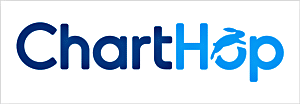
Realistically, there’s more than one way to accomplish that. From a talent perspective, organizations can buy, build, and/or borrow talent. They can plan multiple scenarios using a variety of combinations. What I liked about the ChartHop platform is that the organization could easily create, edit, and change their workforce plan based on their strategic goals and assumptions. The data visualization would allow the company’s talent strategy to be as agile as changing business conditions dictate. The results could be huge in terms of HR’s ability to source, hire, and engage the best talent – which we all know is a priority.
The Key to Business Growth is PeopleOrganizations have an opportunity to create competitive advantage. Like the Pepsi quote mentioned at the beginning of this article, it requires investments and planning. A big part of the investment and planning piece is related to talent.
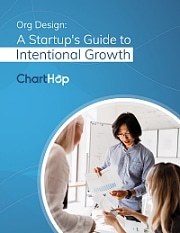
HR Bartender is excited to have partnered with ChartHop to provide you with a copy of their new “Guide to Intentional Growth”. I believe their “think like a startup” reference is spot on and can help organizations focus on – and move toward – the future.
The post Strategic Business Growth: Now Is the Time to Think Like a Startup appeared first on hr bartender.






July 18, 2021
Employee Productivity Means Having a Healthy Relationship with Technology

Estimated reading time: 3 minutes
I’ve been seeing a lot of articles about stress and burnout lately. I’m sure you have too. All with some sort of advice on how to manage and minimize it. However, there is one consistent thread in all the articles – technology.
Technology is an important part of our personal and professional lives. There are wonderful technology tools that can help us save time and money. Technology can give us access to information we wouldn’t get otherwise. So, let’s give technology the appropriate accolades.
That being said, it doesn’t mean we need to be on technology 24/7/365 to realize it’s value.
I subscribe to The New York Times newsletter Dealbook where they recently covered the importance and challenges of stepping away from technology. What I really loved about the newsletter is that it didn’t offer the standard “take a digital detox” approach. Because let’s face it, we all can’t simply walk away from our devices. And on some level, I’d argue that we really don’t want to. We just want the ability to push it away every once in a while to focus on something or someone else.
I will freely admit that I work a lot. I love what I do. And I spend a lot of time on my technology devices. Because I like tech. But even I have a few rules that I try to follow to maintain a healthy relationship with my technology.
Not using technology during meals. Some organizations have no tech rules for meetings. Many families will have no tech rules for meals. For the most part, I try to follow this rule but there are a few exceptions. If I’m traveling and alone, then I might have my phone out. Or if Mr. Bartender and I are playing “name that song” with the music in a restaurant, then I have my phone out. But when we’re at home, my phone is in another room. Designating times when technology is off limits can be helpful.Blocking off “Me Time” on the calendar. I live by my calendar. That doesn’t mean I never move or change things – I do that all the time. But when I put something on my calendar, it gets done. So being open to scheduling time to do whatever I want was a new concept. But once I started it, it became very easy to do. It sounds weird, but I schedule blocks of time to step away from my desk.Using technology for fun. Prior to the pandemic, I was able to read, watch a movie, play games, or listen to music when I traveled. Mr. Bartender was able to do those same things when I was gone. Being at home together has been great – I couldn’t ask for a better person to spend a pandemic with – but we also had to find time to do those things we used to do when we were apart.How does this apply to work? Well, if we want our employees to be productive then we need to help them build a healthy relationship with the technology they use every day. We need to model good technology habits and show our colleagues that it’s okay to step away from our devices. And that we can use our tech for fun and for work.
Technology isn’t going away. I don’t believe the answer is to let employees – at any level of the organization – get so frustrated with their technology that they are stressed by it. Organizations need to set expectations and actually follow them. That way, employees get all the benefits of technology with a minimal amount of frustration and stress.
Image captured by Sharlyn Lauby while exploring the Wynwood Art District in Miami, FL
The post Employee Productivity Means Having a Healthy Relationship with Technology appeared first on hr bartender.






July 15, 2021
Managing Paid Time Off for Remote Employees – Ask #HR Bartender

Estimated reading time: 3 minutes
A couple of months ago, I shared an article on how “Hybrid Workforces Must be Equitable for Everyone”. After publication, I received a question about handling time off.
How do you handle paid time off (PTO) for remote employees? Those working from home don’t use PTO when sick, even though you can tell they aren’t working, (or at least not very hard), yet the employees who work out of the office must use PTO time when sick. It’s not fair and hard to manage. Looking for ideas of how to make this equitable for all.
I actually think there’s more than one issue going on here so let’s talk about the first one which is paid time off (PTO). Organizations deal with time off many different ways. We’ve talked about a few of them in the past.
Front Loading Paid Time Off: Pros and Cons
With more employees working remotely, companies are looking at the benefits they offer in a physical office environment versus the ones that are able to be utilized virtually. They’re also looking at how employees are able to take time off.
How to Turn a New Company Policy from Negative to Positive
In response to the company’s recruiting and vacation challenges, the Kronos HR team developed a system called “myTime”. Basically, it’s an “open” (aka unlimited) vacation policy. There’s no limit on how much time any employee can take. Instead, employees work their schedules out with their supervisors. While Kronos is now UKG (Ultimate Kronos Group), they still offer unlimited time off.
These two articles might offer some creative inspiration for developing a paid time off policy that’s equitable for everyone, regardless of where they’re located.
But I have to admit that there’s another aspect to this reader note to consider. That’s scheduling flexibility and personal accountability. Let’s walk through an example. I’ll use me as a hypothetical employee. I work remotely. I don’t feel good on Tuesday morning and decide to take a nap. After lunch, I start feeling better. If “time worked” is important, then can I work late on Tuesday and make up the time? Or can I work a little extra on Wednesday and Thursday to make up the time? Or could I work on Saturday morning to make up the time? You get my point.
Now, let’s change the scenario. I’m an onsite employee. I don’t feel good on Tuesday morning and call my boss to ask if I can work from home. I still take a nap, but I finish the project that I was due by the end of the day. And on Wednesday, I’m back in the office.
Obviously, it takes a lot of work to create a flexible work environment. But it can be done. It is possible that employees can take time off, not use a paid sick time benefit, start feeling better, and still get work done. It does mean that organizations and managers have to be flexible. It means they need to trust employees and clearly communicate what will be considered acceptable behavior.
And if employees want this type of flexibility, it means they need to be honest about their intentions. Trust is a two-way street. Employees also need to take personal responsibility for getting the work done.
Creating an equitable work arrangement means transitioning to a different type of accountability. It’s less focused on time and more on results. Managers should be given the training and tools to effectively handle these situations. Employees should be informed on new performance standards. We’re not just talking about paid time off, but on everything.
Image captured by Sharlyn Lauby at the Fort Lauderdale-Hollywood International Airport in Fort Lauderdale, FL
The post Managing Paid Time Off for Remote Employees – Ask #HR Bartender appeared first on hr bartender.






July 13, 2021
Recruiting and Retention: Low Empathy Workplaces Are Not Attractive
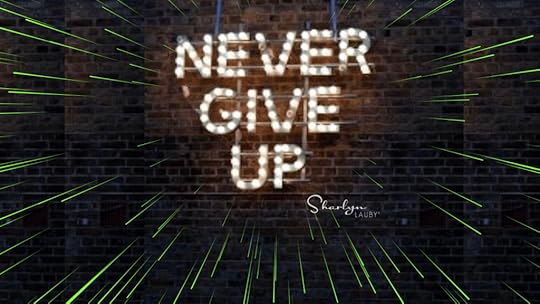
Estimated reading time: 8 minutes
In a new Harris Poll, 78% of hiring decision-makers say their organization has taken action on workplace diversity, equity, and inclusion (DEI). This is good news. Organizations need to demonstrate to employees that they can expect DEI to be more than “talk”.
But it’s important that, when organizations take action, it’s the right actions. I recently came across a report from the Society for Human Resource Management (SHRM) titled “Empathy: DE&I’s Missing Piece”. The report is a part of SHRM’s Together Forward @Work initiative. I thought the report was direct in terms of their findings. More than 9 out of 10 people surveyed said that empathy was essential for a healthy workplace culture.
To help us understand more about how organizations can bring empathy into their DEI efforts, I reached out to Alexander Alonso, Ph.D., SHRM-SCP, Chief Knowledge Officer for SHRM. I got to know Alex several years ago when it was leading the rollouts of the SHRM competency model and SHRM credentialing program. I had the chance to chat with him then about the SHRM competency model and I’m delighted to welcome him back to talk about workplace inclusion and empathy.
Welcome back, Alex! One of the statistics from the SHRM report that really hit me hard was that over half of employees believe that their organization would lie to employees if it would benefit the business. If HR gets feedback like that directly from an employee, what steps or actions can they take?
[Alonso] First off, let’s own the truth that lying is a serious issue. That said, our research shows it is an issue that is linked to workplaces that lack empathy or do not demonstrate empathy—both of which erode trust. Lying is one action that erodes trust.

HR can and should take the lead on resolving reports from staff by taking steps to discover the merits, accuracy, and authenticity of each report. For example, lying may mean different things to different people so it will be important for HR to ask for examples of behaviors and statements to understand why an employee equates the behaviors or statements to lying to benefit the business. Disingenuous behavior and making false statements (or statements that are believed to be inaccurate or false by employees) should be addressed swiftly.
But, HR needs to understand if there is a disconnect between something that is truly false, and something the employee perceives to be a lie because, for example, a leader has access to a higher level of information or confidential information than employees have. Is the example given that the company said something one day but then said something different on the same topic the next day? In other words, HR has an obligation to seriously consider reports from staff, investigate to discover the why behind the report, determine the nature and extent of the problem, propose a solution, get buy-in on the solution, and then act. Putting a process in place that does these things will help rebuild trust rather than undermine it.
In the report, you were quoted as saying, “Empathy is a key lever in driving toxicity out of the organization…”. How can HR professionals help organizational leaders understand why empathy is important to DE&I?
[Alonso] I’m reminded of the Hippocratic Oath: First, do no harm. Workplaces have this same obligation.
Consider words that are associated with the word ‘toxic’: poison, harm, venom. Now consider what the research says about workplaces that combat toxic cultures by showing empathy and allowing it to infuse the workplace. The hallmarks that demonstrate empathy serve to build inclusion and fight against dysfunctional workplaces and exclusion. By understanding what causes a toxic culture, HR can turn the organization onto an inclusive path by focusing on how its employees can and should demonstrate the common characteristics of empathy in daily interactions:
Be kind instead of inconsiderate.Seek to understand rather than judge.Be welcoming instead of condescending.Actively consider others’ viewpoints rather than staying within your comfort zone.Be fair, reasonable, and impartial rather than biased or predisposed in your views.These do not imply weakness. These are strengths. Consider what we also know about what nearly all employees think about empathy: it is an essential quality of a healthy workplace culture – 97% of respondents to our research said this. This is why an organization must step up to the imperative and hold its employees and leaders accountable for their views and behaviors. If you don’t like what you see, set a new standard, and broadly communicate expectations about contributing to healthy culture by demonstrating empathy instead of destroying the culture by being toxic.
Empathy is such an important topic, but I believe it’s very hard to teach. It’s often confused with sympathy. How can organizations teach empathy and hold people accountable for being empathetic?
[Alonso] I think you are right that many conflate the two terms. But empathy is different than sympathy because it inherently requires an individual to gain understanding of another by understanding and finding a way to relate to that individual’s viewpoint. That’s akin to walking a mile in someone else’s shoes. You can’t be empathetic without understanding the other person’s experiences. So, a starting point could be to inform your people managers what benefits the organization derives from its employees being empathetic.
Our study showed that only half of organizations offer training on building and demonstrating empathy. In my view, an organization would approach this training need like any other – conduct a gap analysis to determine where your staff falls short of your expectations then train to those needs.
That said, however, this approach may also require having the difficult conversations internally first to ensure the team understands what the organization expects of its leaders. Why start with leaders? Start there because adopting an attitude of empathy will trickle down throughout the staff if there is ownership for empathy and empathetic behavior at the top. Showing the benefits to the employees through a training program that highlights the benefits to all building that kind of culture. It will naturally drive competitive advantage as well, according to our research.
What can an individual say to someone who feels that demonstrating empathy is considered a “weakness”?
[Alonso] I agree it is true that empathy may have been equated with weakness until now. However, I think the evidence shows the tide is turning, and we don’t have the luxury of holding onto that perception if we want to build an inclusive and viable workplace culture.
I would also counter that assertion with the evidence we have gathered that shows how empathetic workplaces improve an organization’s competitive advantage. Being empathetic can no longer be just about doing the right thing and treating employees considerately. What does that evidence say? Companies with low empathy are having difficulty recruiting and retaining talent and struggle with inclusion, equity, and diversity. Low-empathy workplaces are not attractive to employees of diverse backgrounds. There also needs to be an increase in training specifically geared toward requiring people managers to learn what being empathetic means, and how to demonstrate it in daily interactions with their staff.
Last question. When I was reading the report, I was reminded of your book “ The Price of Pettiness: Bad Behavior in the Workplace and How to Stomp it Out ”. Without giving away your whole book, can you share one thing that individuals – at every level of the organization – can do to minimize petty behavior?
[Alonso] An individual’s actions may impose unintended boundaries that influence one’s destiny—in the workplace and personally. Petty behavior has the potential to affect or alter one’s life, and most likely that will occur in a negative way and could have far-reaching consequences. Break the cycle to avoid these consequences. If you are someone who tends to be petty, recognize that you have an equal ability to overcome that tendency. Commit to growing as an individual into a better edition of your current self.
A HUGE thanks to Alex for sharing his insights with us about the report and how empathy can benefit us on an individual and organizational level. I hope you’ll check out the SHRM report and Alex’s book on the price of pettiness.
Organizations that truly want to make a positive impact on DEI need to do more than just talk. And they need to do more than a generic training program. Providing employees with an opportunity to build empathy is good for them and good for the company.
P.S. The SHRM Annual Conference is coming up soon! September 9-12, 2021 in Las Vegas and it will also have a virtual option. Alex will be co-presenting a session on “Earning Your SHRM-CP or SHRM-SCP: Tips for Testing” with Nancy Woolever, vice president of certification operations. And yours truly is scheduled to facilitate a seminar on “Talent Acquisition: Creating Your Organization’s Strategy”. Details, including SHRM’s protocols for a safe event, are located on their website. Check it out and we hope to see you there!
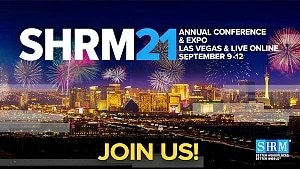
The post Recruiting and Retention: Low Empathy Workplaces Are Not Attractive appeared first on hr bartender.






July 11, 2021
Bookmark This! Employee Financial Wellbeing Edition

Estimated reading time: 3 minutes
If you’re a regular reader of HR Bartender, you probably know that I’m a big fan of the Morning Brew newsletter. It’s a free daily email newsletter that talks about what’s happening in the business world. One of the reasons I like it is because it’s written in a very casual, conversational manner.
A recent issue focused completely on what we’re seeing in the labor market. Specifically, what’s being called “The Great Resignation”. In the U.S., almost 3% of the workforce quit their jobs in April 2021. There’s a lot of speculation as to why people are quitting their jobs, but one of them has to do with employees wanting to work for companies that respect their wellbeing.
Employee wellbeing is an important subject. Gallup has a very nice definition of wellbeing that includes having physical health, liking your career, having social relationships, feeling safe in your community, and managing your financial affairs. Organizations might want to examine their current wellbeing efforts to see if there are some opportunities not only to expand their offering but to make sure that employees know offerings exist.
Employee Wellbeing Should Be Part of Your Organization’s Employment Brand
Many companies are looking for ways to stand out as an employer right now. Showing candidates and employees that the organization values wellbeing is a way to do it. The keyword here is “showing”. It’s time for organizations to let candidates and employees know they have programs in place for wellbeing. Don’t be afraid to make the wellbeing message part of the organization’s recruitment marketing strategy. It could be very helpful in attracting, engaging, and retaining talent.
Financial Wellbeing: Employees Want to Decide How They Get Their Pay
Part of financial wellbeing is allowing employees to have some control over their paycheck. According to the ADP study “Employee Financial Wellness Programs: Employer Guide”, more than 85% of both employees and employers agree that financial wellbeing is important to overall wellbeing. In the same study, 79% of employees say that they want to work for an employer that cares about their financial wellbeing. Organizations can do that by allowing employees to get paid the way they want. And give them tools to manage their pay. It’s a win for the employee and the organization.
Employee Financial Wellbeing Benefits the Bottom Line
After all their hard work, employees want the freedom to manage their money their own way. Organizations can do that and show employees they care. Offering employees financial wellbeing doesn’t have to be complicated – for the company or employees. When employees benefit, the organization benefits in recruiting the best talent, in creating employee engagement, in higher productivity, and in keeping talented people. It’s a win for everyone.
Over the past year, employees have had the opportunity to decide what’s important to them in both their personal and professional lives. They’re not afraid of hard work. But they do want to know that the organization they work at respects their wellbeing. Because that’s what allows them to deliver high performance.
Image captured by Sharlyn Lauby after speaking at the SHRM Annual Conference in Orlando, FL
The post Bookmark This! Employee Financial Wellbeing Edition appeared first on hr bartender.






July 8, 2021
Employees Should Maintain a Clean Work Area – Ask #HR Bartender

I realize the past year has been tough. We’re all looking for a little relief. But that’s not an excuse for bad behavior. Check out today’s reader note.
Good Day! I have to say I love your blog. I do custodial work in a health care facility and this issue has haunted me for a long time. Believe it or not, the nurses leave the breakroom a complete mess. I spend a ton of time not just cleaning the area, which is part of my job, but cleaning up things that they should take care of like dirty dishes, crumbs everywhere, etc. Yesterday, somebody even left dirty socks on a chair.
I am too afraid to bring the issue up and don’t know how to. What do you suggest?
This reader actually sent me a photo of how the nurses leave the workplace. I’m not going to share it but let me say something. If you saw this picture, you would probably question the level of health care that you were receiving from this place. That’s how bad it is. Which is also why the situation needs to be addressed.
But there are several things we don’t know. For example, were the messes left because the nurses had to leave in a hurry to save a patient’s life? I’d like to think if that’s the case then the custodian would understand, and I would have never received this note. But we don’t know any specifics. So, we can only generalize to every workplace.
Leaving your work area clean and tidy is the right thing to do. Regardless of where you work, no one wants to work someplace that looks unsanitary. That includes the breakroom. Even when you have a custodial team. I’ve never seen a custodial job description that included “picking up after employees who don’t know how to clean up after themselves.” If you’re an employee who has left more than your fair share of messes, now is the time to stop. You know who you are.
If an employee leaves the breakroom a mess, there’s a possibility they do the same in customer areas. It’s possible that an employee has a messy home and a clean work area. But personally, I wouldn’t put the odds very high. Employees should be told the level of expectation when it comes to how they maintain customer and employee areas. They should be held accountable to that standard. Oh sure, there might be an emergency when an employee isn’t able to tidy up. We’re not talking about exceptions here.
If employees can see this mess, then chances are, that managers are aware. The reader note leads me to believe this situation has been happening for a while. Which also leads me to believe that management knows about it. Or they should know about it. And they should have already addressed it. If I were a manager at this facility and I was walking a job candidate around and saw this mess…that could keep someone from accepting a job offer. Dirty, smelly work environments can become part of your brand.
Please forgive the rant here but as a HR professional and a manager, this isn’t how I should be spending my time. Employees should have been told on Day One what the expectations are for keeping a clean work area and breakroom. Done. If someone doesn’t follow the rules, ask them to fix the situation. Organizations are focused on economic recovery right now. HR and managers want to spend their time hiring and helping employees succeed in their jobs. I would rather spend my time fighting for employee pay increases than cleaning up a breakroom. I hope anyone reading this article sees my point.
If you’re an employee working in an office right now, take a moment to think about how to keep a clean workspace. If you’re a manager, make sure employees understand the performance standard when it comes to keeping work and break areas tidy. Honestly, the custodian shouldn’t have to tell the company that their co-workers are slobs. They should be focused on cleaning the areas that they are responsible for.
Image captured by Sharlyn Lauby while exploring the Wynwood Art District in Miami, FL
The post Employees Should Maintain a Clean Work Area – Ask #HR Bartender appeared first on hr bartender.






July 6, 2021
Change Management: It’s Okay To Do Something Badly At First
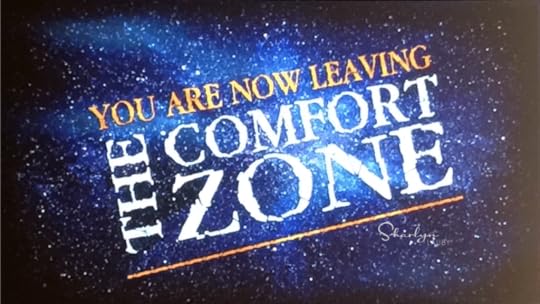
Estimated reading time: 3 minutes
Whenever I’m a participant in a training session or conference, I always walk away with more ideas than I have time. So, it’s important for me to prioritize which ideas I want to start right away and those I will want to implement later. I like using a SMART plan to do this.
Those of you who regularly read HR Bartender know that I love SMART plans. The acronym stands for Specific, Measurable, Actionable, Responsible, and Time-Bound. It’s a great way for me to stay focused when I’m implementing a new idea or program. Not only do I use it when I’m working on new ideas, I also like sharing it when I conduct training, so others know how to process the information they’ve learned.
The other thing that I try to remember when I’m implementing something new is that it takes time to become proficient and comfortable. There are very few things that we will be fantastic and perfect at from the start. Several years ago, I learned a four-step process for incorporating new items into my routine. This is another one of those models that I try to share with others when I’m conducting training, so participants realize it’s okay to do something badly (at first).
AWARENESS. During this phase, we realize that we need to make a change. It could be because the current situation isn’t working. For example, we know that we have to address a performance issue with an employee. Or maybe we know that we need to change because in the future this new idea will be the norm. An example might be a new technology. Regardless of the reason, we are aware that change is necessary.
AWKWARDNESS. If you’re familiar with Lewin’s Change Management Model (another one of my favorites), then I like to think of this as the “unfreeze” step. This is where we start working toward change. It will feel uncomfortable. We might make some mistakes. There could be some setbacks. But that’s all a normal part of the change process. I’m not suggesting this is a justification for not working hard or for double-checking your work. But it’s okay to experience the awkwardness of change.
SKILLFULNESS. At some point, all of our focus and hard work will pay off. If we’ve been struggling to address performance issues with employees, we start to find the words that work for us. If we’ve been frustrated with a new technology, we start thinking like the software and getting stuff done. The awkwardness turns to skillfulness. The uncomfortable becomes comfortable. We’ve turned the corner in the change process.
INTEGRATION. Lastly, the change becomes a part of our new normal. Again, if we look at Lewin’s Change Management Model, we might call this the “refreeze” step. The change has been made and it’s integrated into our routine. Of course, this doesn’t mean we’re done with change forever. It’s only until we’re made aware of the next necessary change. I think it’s important during the integration phase that we take time to celebrate our successes and debrief for future changes.
The reason I like to share awareness, awkwardness, skillfulness, and integration as a change management process is because, hopefully, it helps people realize that it’s okay to stumble in the learning process. I’m reminded of well-known business leaders like Sara Blakely and Sir Richard Branson who have openly shared their failures on the path to their success.
Yes, we do need to get things right. And we need to focus. We can also learn from our mistakes along the way. We can do things at less than 100% and still achieve results. Then use our energies to get even better.
Image captured by Sharlyn Lauby after speaking at the SHRM Annual Conference in Washington, DC
The post Change Management: It’s Okay To Do Something Badly At First appeared first on hr bartender.






Sharlyn J. Lauby's Blog
- Sharlyn J. Lauby's profile
- 10 followers



